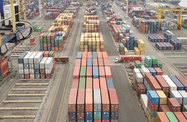
On Retail Indicators and Consumer Trends
How would you assess the recovery rate for consumption indicators in the short term?
KRIENGCHAI BOONPOAPICHART: I believe 2016 was a year of recovery for Thailand, as many indicators began trending upward following several years in which consumption and overall economic growth were negatively impacted by several factors, including political and economic volatility, and natural disasters. The first nine months of 2016 saw economic indicators get back on track, and even though the fourth quarter saw a slowdown due to the national mourning of King Bhumibol Adulyadej’s death, growth has recovered once again in early 2017. In spite of issues such as populist policy, protests and socio-economic volatility, we again see a shift away from the previously savings-oriented mindset prevalent among the public.
This being said, recovery has not been as fast as many hoped or predicted. While the government has begun to inject stimulus and invest in high volumes, there is a time lag to some extent, but those initiatives are now starting to kick in. Furthermore, global volatility impacts consumption in Thailand as do domestic factors, and while Thailand has weathered external crises very well as of late, there is still some impact. Overall, I see this rate of recovery being very organic and sustainable, and positive trends in indicators, including farmers’ income, consumer confidence, inflation and tourism, bode well for the national economy.
What distinctions exist between consumer demand in Bangkok compared to the inland provinces, and how are retailers expanding accordingly?
KRIENGCHAI: Looking at 7-Eleven, for example, our operations are very evenly split between Bangkok and its vicinities, and the inland provinces, accounting for 45% and 55% of stores, respectively. The rate of expansion in the inland provinces has grown slightly faster, accounting for 60% of expanded capacity overall. While there is some deviation in terms of growth trends by location, it is not so significant as to indicate a strong bias in retail growth.
We still believe Bangkok has great growth potential, given the number of new projects and property developments cropping up, the investment in mass transit and infrastructure, and the expansion of luxury brands in retail and hospitality across the capital. Furthermore, the city itself is still expanding outward. Looking at the inland provinces, farmers’ incomes are growing as agricultural commodity prices recover and the country’s border areas experience high rates of growth due to booming intra-regional trade.
Another trend retailers are supporting is tourism growth. Tourists support domestic consumption and stimulate local economies. Chinese tourism is growing in particular, and more and more retailers are accommodating this by accepting Chinese credit cards and payment schemes. In pilot programmes across 7-Eleven stores, those locations have shown very good results – so we believe it is a market that the sector can tap to a greater degree.
In what way is the digitalisation of consumers’ shopping habits prompting retailers to invest in innovation?
KRIENGCHAI: The first and most important thing for the retail sector to keep in mind is that, although the digital era is coming, there will always be a need for the human touch, whether in terms of last mile delivery or products and services that still have to be conducted physically. In the case of Thailand specifically, there is still a migration and transition period from offline to online that is under way. The key is instilling digital readiness in preparing the sector for this trend, while not overinvesting in it and overlooking the needs of the customer in the present day.
Looking at specific digital enhancements in which the sector is investing in the short term, payment and services are a natural starting point. Demand for touch-and-go e-wallets and e-money is scaling up, while demand for settling bills and conducting booking and ticketing activities at convenience stores is increasing as well. E-commerce and online shopping will greatly shape the sector’s evolution in the years to come. Retailers do not necessarily need to compete directly with other entities specialising in these fields, but rather need to focus on serving as a platform to facilitate the trend.


